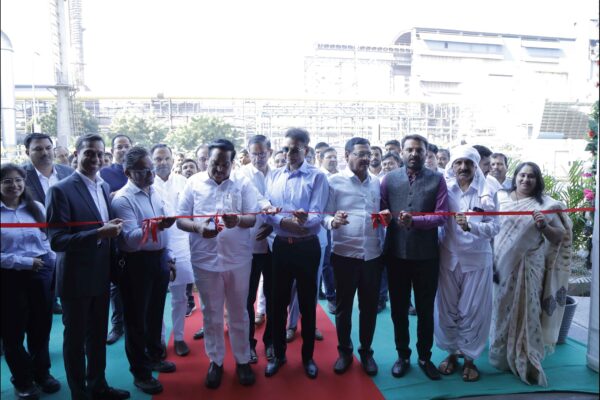Solar Rooftops in one crore homes: The importance of getting discoms motivated
by Santosh Kamath, Managing Director (Energy Transition) at Alvarez & Marsal
This article emphasizes the advantages and benefits associated with the installation of solar rooftop systems in households, showcasing how such installations can be optimized to yield financial gains
Recently, the Prime Minister announced his vision to have solar rooftop systems in one crore households, so that the common man benefits from this technology by achieving power bill savings. Over the years, while large-scale ground-mounted solar systems (utility solar) have done well, the uptake of residential solar rooftops has been relatively slow. How can we change this in order to realize the PM’s vision?
Let us take the example of a middle-income household with a power consumption of around 350 units a month. Let us say his power bill is around INR 2,500 per month at an average power tariff of INR 7/kwh. For such a consumer, a 3-kW solar rooftop system would suffice to meet his monthly power requirements. Such a system is likely to cost around INR 1.65 lakhs (before subsidy), which would mean a simple payback period of 5.5 years. We must remember that the life of these assets is nearly 20 years, so a 5.5-year payback is still attractive, providing a return on investment of nearly 15 percent p.a. However, the upfront cost might be a barrier to adoption. For a consumer in a lower consumption bracket with lower tariffs, the payback period would be longer. This situation changes dramatically once we consider subsidy, which at INR 30,000 per kW (with a cap of INR 78,000) would mean that the payback period is reduced to less than three years and the upfront outgo is reduced. This could lead to a significant uptake in household rooftop systems.
From a discom perspective, a middle-income household opting for his solar rooftop system would lead to a revenue loss. However, the tariff of such a consumer is broadly equal to the cost of supply for the discom, so a revenue loss would appear to be offset by a corresponding cost saving for the discom. However, this is not exactly true. There are two reasons why a discom would not like to see a large-scale switching by such consumers.
First, the discom incurs fixed costs of supply, which it continues to incur even if the consumer does not take his power. This has to do with the cost of the network which it has to maintain to meet the peak demand requirements as well as commitment charges to be paid to power generators.
The second and more striking one is the cost incurred by the discom to support net metering for the consumer. Netmetering is the scheme wherein the consumer gets credit for his solar generation during non-solar hours. This is achieved by the discom absorbing the surplus power during the day (‘export’ by the consumer) and setting this off during the night-time power taken by the consumer (‘import’ by the consumer). This cost the discom money since the market price of power at these times can be vastly different. Under the net metering scheme, this facility is offered free of cost. When rooftop solar scales up, this cost will become substantial for the discom.
For enabling a rapid scale up, we should reduce the overall system costs and also get the discoms’ interests aligned. To do this, we need to have the discom at the center of this scheme. Here is how the program could work: the discom initiates an aggregation exercise, wherein it reaches out to its consumers seeking to enroll for this program. The discom should ideally target consumers who are in the right consumption bracket where the electricity tariffs are nearly equal to the cost of supply or less, so there is no net loss of revenue. Further, the discom can target geographic areas which are experiencing day-time demand peaks. These peaks could be served by the locally generated solar power, thus saving network augmentation upstream. By incorporating this into the network plan, the discom can also smartly plan for energy storage solutions at the sub-station level, so that the solar power locally generated can be stored and used during peak hours. Having the discom steer this rollout gives the advantage that the discom can try to achieve these goals optimally.
The next important step is to get the commercial model right for all the stakeholders. This is where the discom’s role again comes in. Firstly, a discom-supported enrollment and aggregation program can cut the costs of outreach and installation since the installer gets scale and a ready customer base. This could reduce the system costs by at least 10-15 percent. Secondly, the discoms can also enable a consumer financing facility by tying up with banks. Under this scheme, a loan is offered to consumers and the EMI against the loan can be collected in the monthly electricity bill issued by the discom. In effect, the EMI becomes part of the monthly collection of the discom, which is then passed on to the banks. This substantially improves payment security and reduces the cost of collection for the banks enabling them to offer lower interest rates. This should also enable a larger pool of capital to be available to this sector and reduce the need for high upfront subsidies since with the financing schemes the barrier of upfront costs can be mitigated.
Through the aggregation effect and the on-bill financing scheme, the cost of rooftop solar power can be reduced by as much as 20-25 percent. For enabling this, the discom is rightfully placed to seek a fee for this service. It also creates space to charge an appropriate fee to support net metering. By reducing the need for high levels of upfront subsidies to consumers, it allows for some of the budget to be diverted to discoms for supporting this program. The discom can use this budget for creating community battery storage systems. By directing the aggregation effort to areas thatmake sense in terms of relieving daytime peak demands, the discom can also save costly network augmentation and drive the goal of system optimality.
In summary, having the discom at the center of this scheme can help to create a win-win model for all stakeholders and allow for rapid scale-up. Without their active involvement and support, achieving this scale would be ambitious. The scheme should therefore balance out the support for the discom in addition to that for the consumers.The support to the discoms can be in the form of incentives for installation and grants for creating battery storage systems at sub-stations. The total budgetary outlay of the Government should take both these requirements into account. Achieving a target of one crore households with rooftop solar would translate to nearly 30 GW of capacity, more than 10 times today’s levels for households. It would bring the power of the sun to our doorsteps and spur the imagination of millions.
















